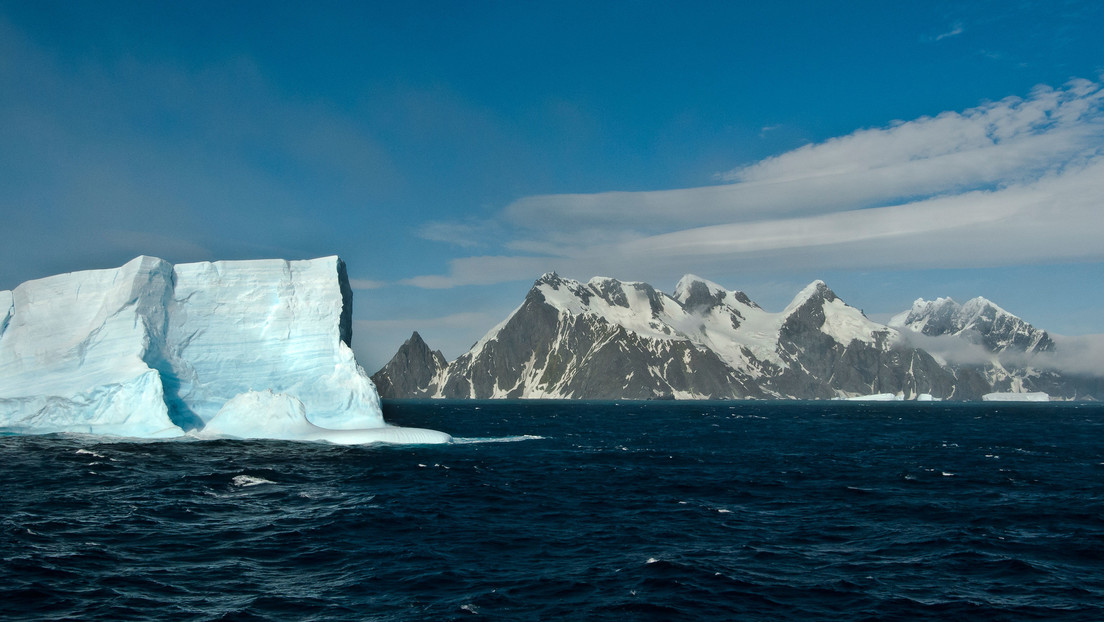 It is believed that, even in the most extreme environments on our planet, microorganisms seem to coexist and thrive everywhere, from the depths of the oceans to the top of Mount Everest. However, in recent years, scientists have found two places on Earth where life is presumed to exist at all.
It is believed that, even in the most extreme environments on our planet, microorganisms seem to coexist and thrive everywhere, from the depths of the oceans to the top of Mount Everest. However, in recent years, scientists have found two places on Earth where life is presumed to exist at all.
The first was discovered in Antarctica in June, in a desert area near the Shackleton Glacier, where researchers found a series of conditions that prevent microorganisms from inhabiting: intense cold, dry soils and the presence of toxic salts.
According to experts, the combination of these three factors completely limits the possibilities for life to prosper. Of the more than 200 soil samples taken from the glacier, no traces of living things were found.
"It has always been assumed that microbes are resistant, that they can live anywhere," said Noah Fierer, a microbial ecologist at the University of Colorado at Boulder, whose team studied soils in Antarctica.
How to take samples on Mars
This discovery, published in May in the journal JGR Biogeosciences, could help guide the search for life on Mars, since Antarctic soils have been frozen, saturated with toxic salts and have not harbored considerable amounts of liquid water for at least two million. years, similar to Martian soils.
The samples were taken in January 2018 during the expedition to a remote area of ??the Transantarctic Mountains. The scientists camped on the Shackleton Glacier and used a helicopter for the collection that took them to the highest parts, more than two thousand meters above sea level.
Byron Adams, a biologist at Brigham Young University and project director, recalls that during sample collection, the soil was littered with reddish volcanic rocks, punctured and polished by centuries of wind erosion.
As scientists studied the rocks, they found that their underside was covered with white salts, particularly toxic crystals of perchlorates, chlorates, and nitrates. Perchlorates and chlorates are reactive, caustic salts used in rocket fuels and industrial lyes, and are abundant on the surface of Mars.
"Obviously, we advocate using these kinds of places to study what life might be like on Mars or elsewhere in the universe," Adams said. If there are beings that can live here and handle this environment, "then maybe they can live on a planet like Mars," he added.
The Danakil desert
In 2019, a French-Spanish team of scientists had already suggested that there are places on Earth where no type of life could thrive.
In an article published in the journal Nature Ecology & Evolution, the researchers concluded that in the Dallol geothermal complex, one of the most dangerous and inhospitable environments on our planet, located in the Danakil desert (Ethiopia), there is no trace of microbial life.
Experts collected a large number of samples in four different areas of the geothermal complex between 2016 and 2018. Although initial analyzes showed traces of bacteria and archaea, scientists believe that these are red herrings because most were related to laboratory contaminants, and others possibly were bacteria introduced by humans during expeditions and tourist visits to the site.
"After analyzing many more samples than in previous works, with adequate controls to avoid contamination and a well-calibrated methodology, we have verified that there is no microbial life in these salty, hot and hyperacid pools, nor in the adjacent brine lakes rich in magnesium”, said Purificación López García, head of the work and biologist at the National Center for Scientific Research (CNRS).
The team identified two main physicochemical barriers that prevent life from thriving in the presence of liquid water on Earth and potentially elsewhere.
The first barrier is a high level of magnesium, which is capable of destroying any type of cell formation due to a phenomenon known as chaotropic activity. And the second corresponds to a deadly combination of hyperacidity and hypersalinity, where simultaneous molecular adaptations to too high and low pH are impossible.
The limit of life
The authors of both studies try to be careful with their conclusions, since there is the remote possibility that there are so few microbes in the samples that neither method has been able to detect them.
"We cannot say that the soils are sterile. No one can say that," Fierer said of the Shackleton glacier. "It is an endless search. There is always another method or a variant of a method that can be tried," he added.
The results also raise questions about how negative scientific results should be interpreted, especially in the search for life on other planets. The challenge returns to the philosophical question of "how do you prove something negative?"
Likewise, the evidence presented by the research group in the Dallol pools shows that there are places on the earth's surface "that are sterile even if they contain liquid water," as López García underlined. This means that the presence of liquid water on a planet, which is often used as a habitability criterion, does not directly imply that it has life.
Both studies provide a more in-depth understanding of the limits of life on Earth and require caution when interpreting morphological biosignatures on and off the planet. This suggests that the apparently cellular or “biological” aspect of a structure should not be trusted, because it could have an abiotic origin. (Text and photo: RT)